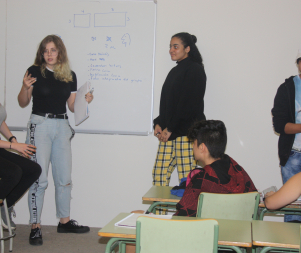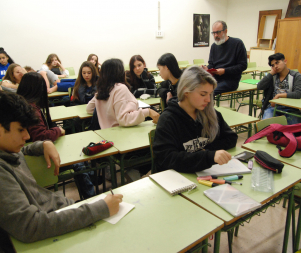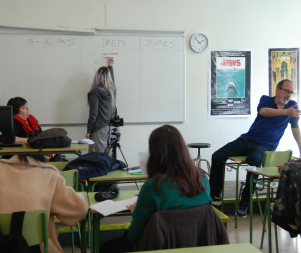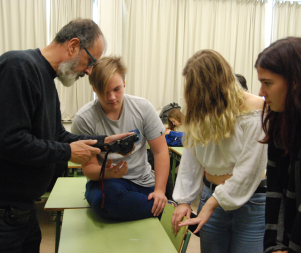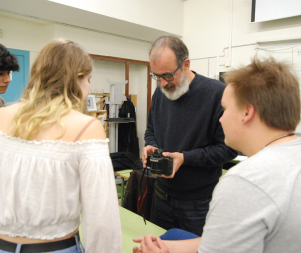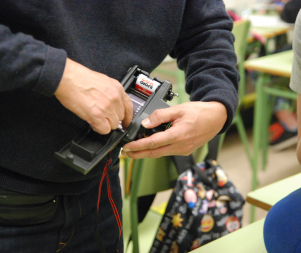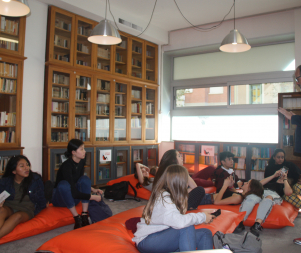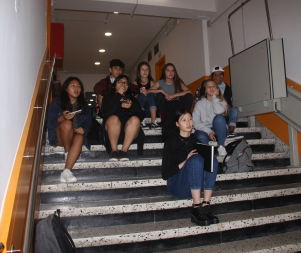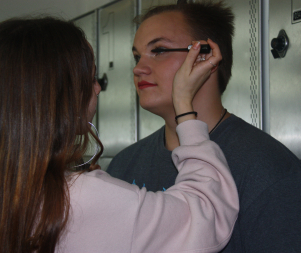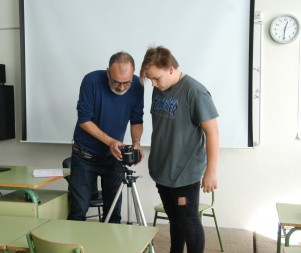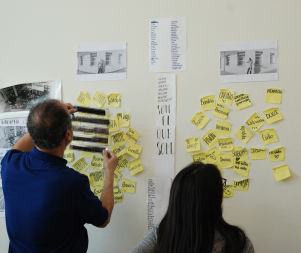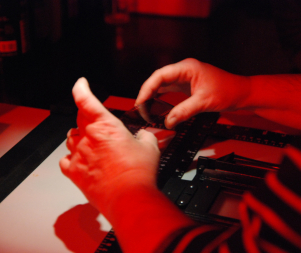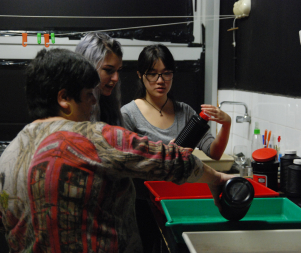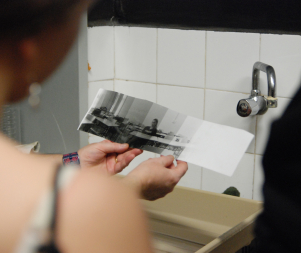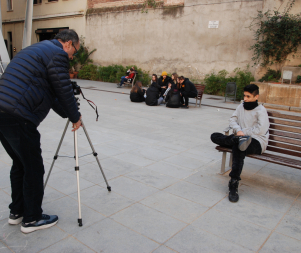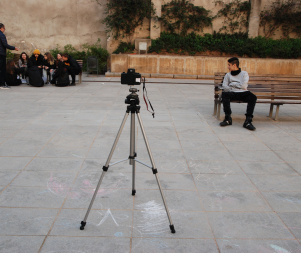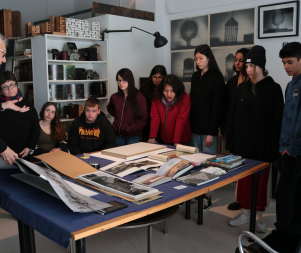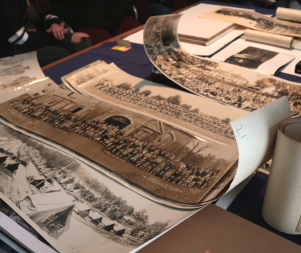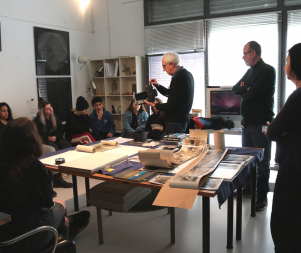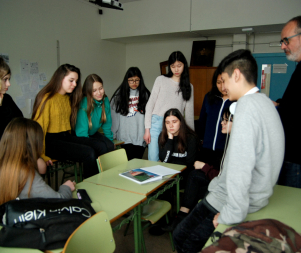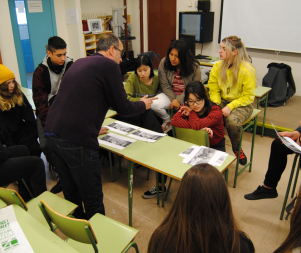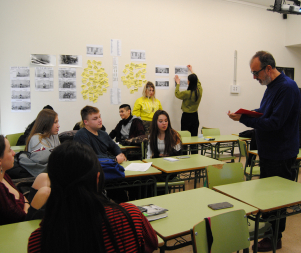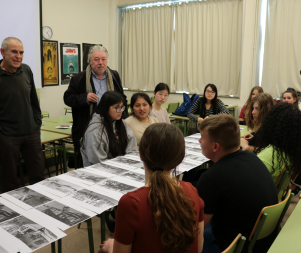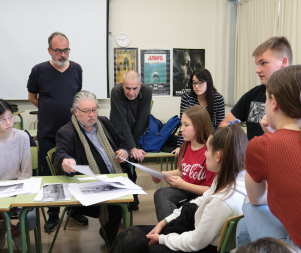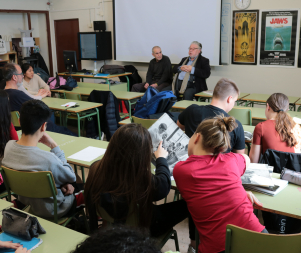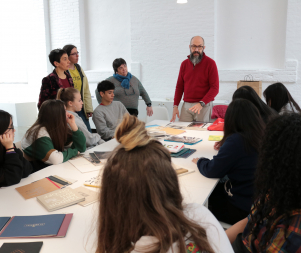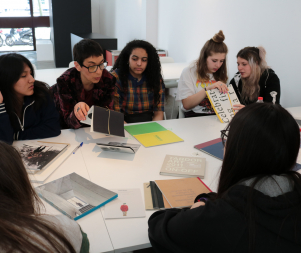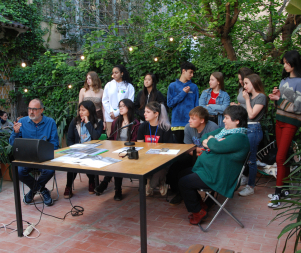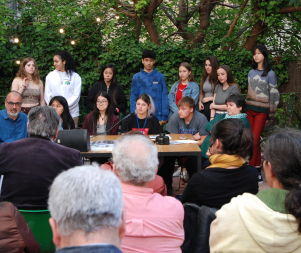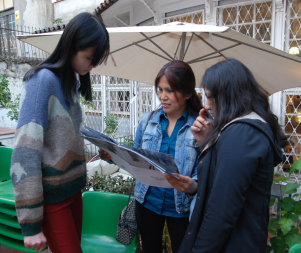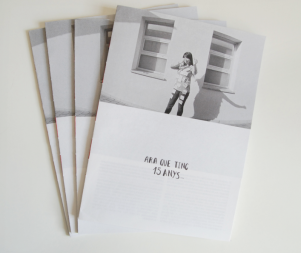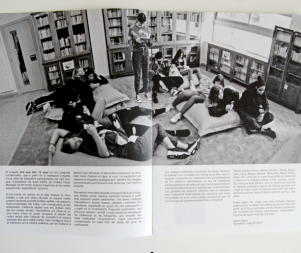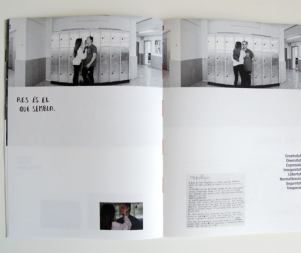- 14th EDITION 2022 / 2023
- 13th EDITION 2021 / 2022
- 12th EDITION 2020 / 2021
- 11th EDITION 2019 / 2020
- 10th EDITION 2018 / 2019
- 9th EDITION 2017 / 2018
- 8th EDITION 2016 / 2017
- 7th EDITION 2015 / 2016
- 6th EDITION 2014 / 2015
- 5th EDITION 2013 / 2014
- 4th EDITION 2012 / 2013
- 3rd EDITION 2011 / 2012
- 2nd EDITION 2010 / 2011
- 1st EDITION 2009 / 2010
Antoni Abad IN RESiDENCE at the School Poeta Maragall
Starting point: reactivating the institute's photographic laboratory
Making the most of the school's photographic laboratory and with the idea of slowing down the frenetic pace and immediacy that engulfs us, Antoni Abad suggested working with analogue photos using a Horizon panoramic camera. At the same time, he suggested working on the time of life the group of students were living through, at the age of 15, and creating content that reflected the opinions, experiences and expectations the students were going through, linked to the parameters of beings, spaces, objects and activities.
Horizon Camera
Antoni Abad brought the class a Horizon camera, through which students discovered the analogue camera: how to load the film, the time such cameras needed to work... and emphasised the idea of slowing down and escaping the immediacy with which they were used to creating images.
First explorations in school
The group of students carried out their first brainstorming of ideas, spaces and situations they wanted to represent at the institute. Loneliness, isolation, the voice of adolescent expression, questions of gender, the spaces they move through, feelings, relations between students and teachers and what the building itself represents all ended up as photographic proposals.
Taking photos, labelling
The class group was divided up at each session, on a rotational basis and as a methodology, from November to March. In parallel, one group worked in the laboratory and the other took photos that they were defining as a group.
Discovering the photographic laboratory
In the photographic laboratory they discovered the processes for- chemical development, amplification and copying. At the same time, as the photos were being developed, time was spent on reaching a consensus and finding the labels that would accompany each of the photos.
Explorations beyond the school
To bring continuity to the proposals made within the school, it was suggested that students go out to the streets and explore some of the neighbourhood spaces. Situations were considered which were represented in the outside spaces surrounding the school.
Visit to the La Model prison
Taking advantage of the exhibition entitled “L’art irreductible. Miratges de l’Art Brut”, curated by Mery Cuesta, a visit was organised to the La Model prison. This space created a strong point for reflection: on the one hand, the trail of experiences in the prison space; on the other, the exhibition that spoke of various modes of expression and creation, from illness or lack of institutional recognition.
Visit to Jordi Guillumet and Mònica Roselló's studio
Work with panoramic photography led to a desire to find out more. A visit was made to the studio of two photographers, Jordi Guillumet and Mònica Roselló, who showed their early 20th-century panoramic photographic collection. They explained how that type of camera was used and the reasons for portraying large groups of people in a single panoramic photograph. There was also time to see several medium- and large-format analogue cameras.
Publication’s conception
The process for arranging all the material that had been created began at the start of March. Looking at other publications was a good starting point for defining it. Besides seeing references, the students started making a selection from among the photographic materials produced.
Visit from Salvador Sansuan and Miquel Anglarill
To strengthen the criteria in the publication, a meeting was arranged at the school with the photographers and editors Salvador Sansuan and Miquel Anglarill, who gave an account of their experiences at the newspaper La Vanguardia. At the same time, the group showed the work they had produced, the layout and first edition proposals, working on the basis of possibilities and analysing what was generated by each of the photos selected.
Visit to The Folio Club
Visit and meeting with The Folio Club’s printers, once the layout process had started. The first printing proofs were reviewed during the visit and various possibilities analysed for completing the production of the book.
Presentation
The Ara que tinc 15 anys project was presented at the La Central bookshop on 9 May. Students, teachers and the creator explained the process to those attending by recounting the learning and experiences shared during the course.

